How Do U Know How Many Babies She Having
Did 1 adult female really give nascency to 69 children?
(Prototype credit:
Getty Images
)
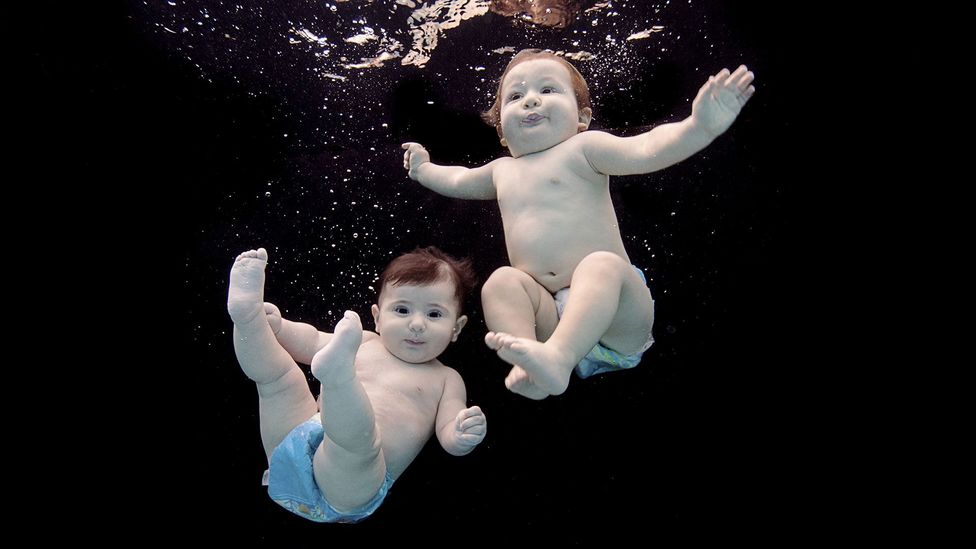
Conceiving and raising one child is demanding enough – yet historical reports suggest that i woman bore 69. Are they true? And will modern medicine button the limit fifty-fifty farther?
I
If British tabloids had existed in the 18th Century, they would have gone utterly burbling over the family of Russian peasant Feodor Vassilyev.
Why? His kickoff wife – whose proper noun is lost to history – holds the widely cited earth record for begetting the most children. Co-ordinate to a local monastery'southward report to the government in Moscow, between 1725 and 1765 Mrs Vassilyev popped out 16 pairs of twins, seven sets of triplets and four sets of quadruplets, over 27 carve up labours. The thou total: 69 children.
You can only imagine how a present-day newspaper editor would react to such fecundity, peculiarly given the tabloid clamour in recent years over octuplet female parent Nadya "Octomom" Suleman, who has xiv children, or the Radford family in Great britain, which has xvi kids – and a TV testify.
And so, is it fifty-fifty possible to birth sixty+ children? "It sounds fantastical. I mean, 69 kids? C'monday!" says James Segars, managing director of the Division of Reproductive Science and Women'due south Health Research at Johns Hopkins University.
I decided to dig a bit deeper into this amazing – and seemingly dubious – claim, by consulting reproduction experts. My hope was to discover the fundamental limits to how many children a woman could always naturally have. Just along the way, I also discovered that if y'all accept mod science into business relationship, a woman could, in theory, become the female parent to more than children than we ever idea possible.
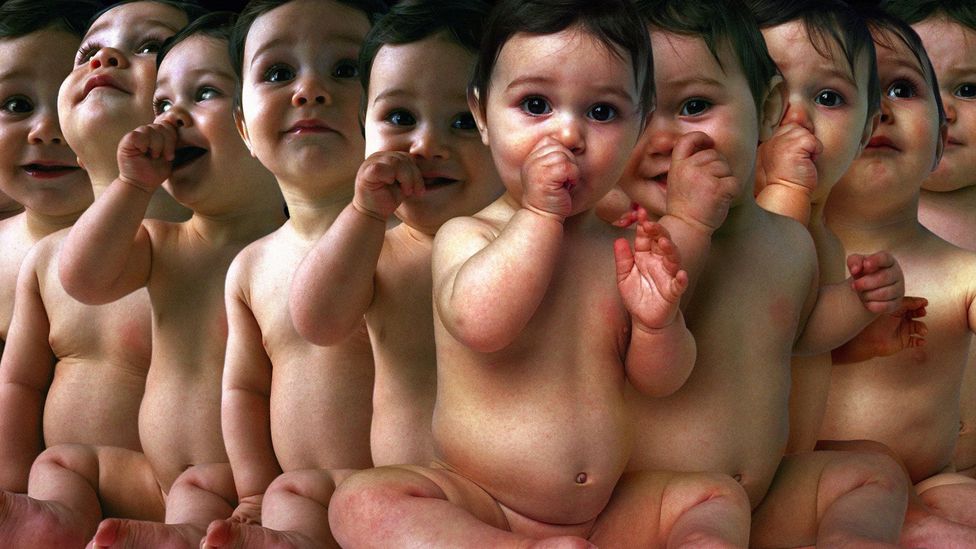
In the UK, only around 1.5% of pregnancies pb to twins, and every bit for triplets, it'due south a vanishingly small-scale 3 ten-thousandths of a pct (Credit: Getty Images)
First, allow's consider the mathematics of the Vassilyev report. Would she take had enough time for 27 pregnancies in the twoscore year-span that is claimed? Initially, the answer appears to be yep, especially if you take into account the fact that triplets and quadruplets are usually birthed after shorter-than-average terms.
Some rough calculations: xvi twins times 37 weeks; seven triplets times 32 weeks; iv quadruplets times 30 weeks. Add information technology up, and Mrs Vassilyev would have been pregnant for 18 years of the twoscore years – half of the time, or two-decades-worth of craving pickles and ice foam.
But whether that would exist possible in reality is some other matter.
For starters, could she have been fertile plenty over such a long time period? Women typically go through menarche at around historic period 15, when their ovaries begin releasing usually a single egg every 28 days. This ovulation continues until the egg supply, insofar as nosotros know, is exhausted at menopause, the typical onset of which is 51 years of age.

Virtually women don't go pregnant by their mid-forties, then would there exist enough time to have 69 children? (Credit: Getty Images)
Well before menopause, though, women'south fertility plummets. "The percentage chance of having a baby per cycle when a woman is 45 [years quondam] is about 1% per month," says Valerie Baker, an acquaintance professor of obstetrics and gynaecology at the Stanford School of Medicine.
As women get older, egg quantity and quality diminish. Halfway through fetal evolution, unborn females have equally many every bit seven meg immature egg cells, but they are born with closer to only 1 million eggs. Only a few hundred g eggs then persist into adulthood. And of these legions, technically known as follicles, something like 400 ever mature and eventually ovulate, bold a thirty-yr span of potential childbearing.
The final of these eggs, ovulated belatedly in a woman'south fertility window, accept far higher chances of accruing damage and mutations, such as chromosomal abnormalities. Many pregnancies with these atypical eggs self-stop.
"About women don't get pregnant past 44, 42 [years of age]," says Segars. "Only you'll occasionally hear of people pregnant in their tardily 40s."
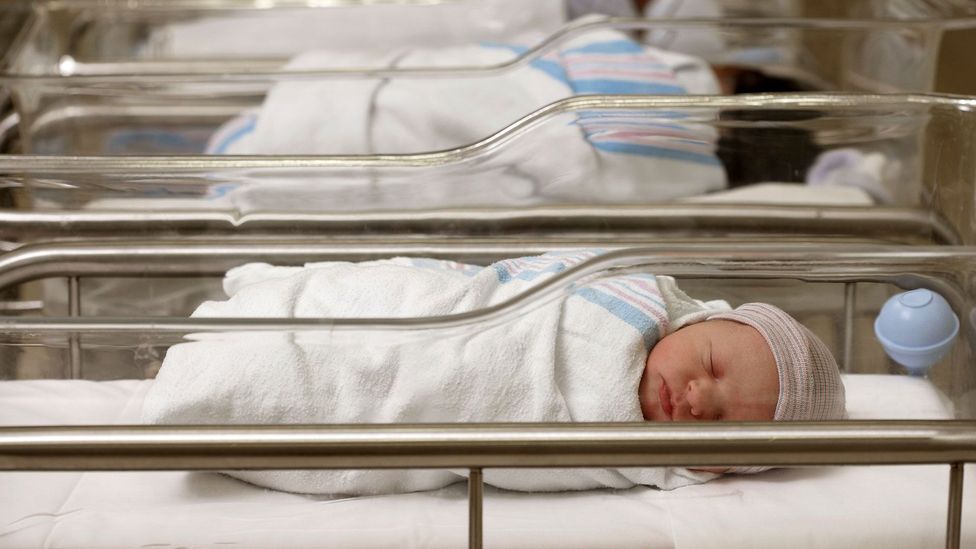
Females are born with close to only 1 million eggs, and the number chop-chop dwindles (Credit: Getty Images)
What'southward more, the ability to become significant goes down with each pregnancy, every bit successive labours take their toll out on a woman'south reproductive anatomy. And if Mrs Vassilyev were breastfeeding, as might be expected for a peasant who could not beget to keep wet nurses well-nigh, her torso would non ovulate. This built-in, biological method of birth control would lengthen the odds even farther for her getting pregnant as oftentimes as she obviously must have for 69 crumbsnatchers.
Feodor and his wife, therefore, would take had to be extremely lucky (or, arguably, unlucky) to have kept hitting the marking into her 50s.
Surviving labour
The hurdles for ushering 69 children into the world hardly stop there, however. The winding downward of a woman'south "biological clock" makes a lot of sense from an evolutionary perspective, for carrying and delivering a child is an incredibly difficult task made harder with age.
"Nature would want to make limits," says Baker. "Pregnancy is the most physically rigorous thing a woman's torso ever goes through."
The burden of labour is what really begins to undermine the credibility of Vassilyev's 69 children merits – particularly considering the setting of hundreds of years ago, out in the Russian countryside.
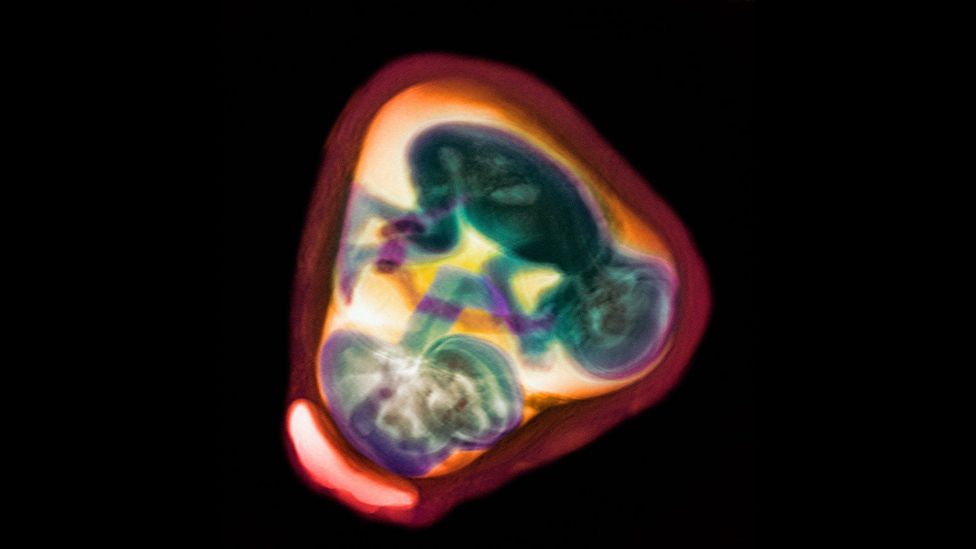
Multiple twins or triplets could in principle allow for high numbers of children, simply the wellness risks are great (Credit: SPL)
In developed nations, modern obstetric care, such every bit medically necessary caesarean sections, has slashed maternal mortality rates. In the Great britain, just eight women per 100,000 live births dice due to pregnancy-related issues while pregnant or within six weeks of ending a pregnancy, co-ordinate to the most recent statistics from the World Bank. Meanwhile, in one of the poorest countries on the planet, Sierra Leone, the rate is 1,100 maternal deaths per 100,000 alive births.
Bold Mrs Vassilyev survived 27 labours is appropriately dubious. "In the by, every pregnancy was a risk to the mother's life," says Segars. Notably, the risks for serious, mortiferous complications, such as hemorrhaging, skyrocket with multiple births such as quads.
"Every pregnancy dorsum so was a complication, even a singleton," says Tilly.
An atrocious lot of nippers
Mrs Vassilyev's multiple conceptions of twins, triplets and quadruplets farther strains credibility. Fetal twins and their more numerous permutations come about in 1 of two ways: either multiple ovulated eggs are successfully fertilised past sperm – so-chosen congenial twins – or a unmarried fertilised egg divides into 2 or more viable embryos, leading to identical twins with the same genetic lawmaking.
Overall, these events are very rare. In the UK in 2012, for example, the chances of birthing twins stood at but 1.five% of pregnancies; triplets, a vanishingly small three ten-thousandths of a percent, and quadruplets or more than, just 3 instances out of 778,805 maternities, co-ordinate to statistics compiled by the Multiple Births Foundation.
True, a propensity to have twins does run in families, so Feodor's wife could arguably accept been just an farthermost example. Simply overall, the odds for Mrs Vassilyev to accept somehow conceived and so survived the cranking out of xvi twins alone – let lonely the quads – seem astronomical. "Fifty-fifty merely the 16 sets of twins? I'd exist shocked," says Jonathan Tilly of Northeastern Academy, who is investigating oocyte stem cells for their use in infertility and women'south health (which nosotros'll hear more about later on).
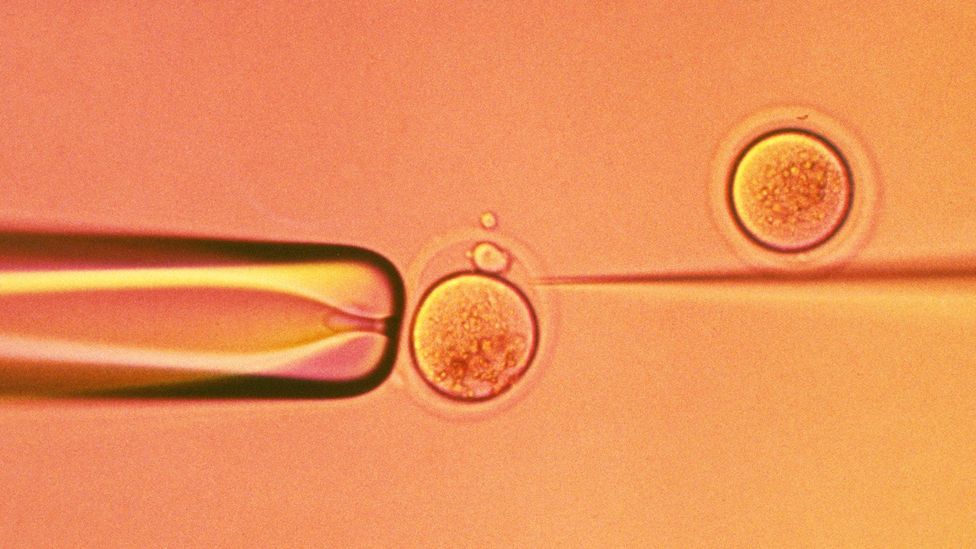
Mod fertilisation techniques hateful births of countless children could, in theory, be possible (Credit: SPL)
All the same another cherry flag in the Vassilyev tale: supposedly 67 of those 69 children survived infancy. Infant bloodshed was high in the 18th Century for full-term singletons, and dismally more so for higher-social club births, who are well-nigh always born pre-term and less healthy. "Even if you had 4 sets of quads today, I'm not sure they'd all survive," says Segars.
Finally, there'south i question that beggars belief: what woman would want to do this? "Just think of the stress!" says Baker.
Segars agrees. The concluding reason he doubts the Vassilyev claim? "Sanity! I couldn't imagine living in that house."
If it were truthful afterwards all, however, the daunting childcare duties could be part of the reason why after decades of union, the Vassilyev couple split upward. Old human being Feodor took a 2nd wife, who allegedly had "only" xviii children. Talk nearly tabloid forage.
Brave new earth
So what is the actual limit? Answering that question today is complicated because the "natural" limits to offspring from an private woman no longer strictly apply.
For starters, assisted reproductive technologies (ART) developed in the late 1970s has led to a fasten in twins, triplets and and so on. ("Octomom" Suleman, for instance, used ART.) The fact that surrogate mothers can now carry the biological fetuses of other people also potentially increases the maximum number of children possible within one family.
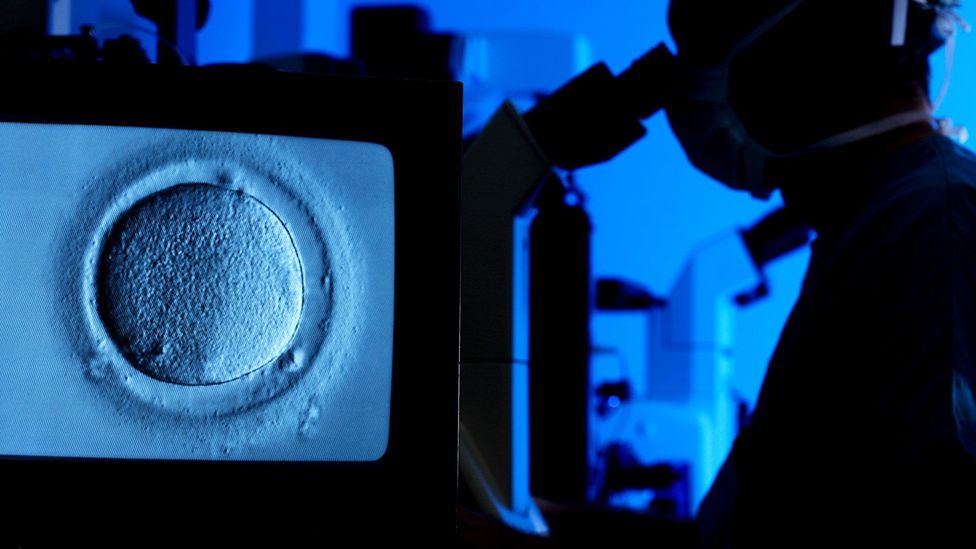
I researcher believes that it might one day be possible to switch on a woman's power to produce vastly more eggs (Credit: SPL)
But mayhap most intriguingly, research findings in the last few years hint that the outer limits of female reproduction could exist much greater than we can imagine. Recent studies suggest adult female'south ovaries incorporate "oocyte stem cells" that, if properly stimulated, might allow her to produce eggs in almost unlimited number.
Tilly and colleagues have documented these cells in creatures ranging from flies to monkeys and, in 2012, humans, too. While oocyte stem cells do not produce eggs in humans, they do in other creatures. Female flies brand fresh eggs routinely this manner.
While many doctors in his field harbour doubts, Tilly believes the mechanism in women could, in principle, be switched on, helping women whose existing egg supply is in dire straits or prematurely exhausted from cancer treatment, for instance.
If that hypothetical procedure does turn out to be possible, consider this extreme scenario: fertility drugs could be used to induce ovarian hyperstimulation, wherein multiple follicles mature and ovulate at once. These bunches of eggs could and so be surgically removed and fertilised in vitro, outside the body, for subsequent surgical placement into the uterus of an army of surrogate mothers, who would bear the foetus (or foetuses) to term. Each i could potentially have twins – or more.
From a reproductive perspective, then, women could therefore exist more similar men – with the capability of mothering hundreds if not thousands of children, leaving Mrs Vassilyev in the grit.
Tilly makes articulate that his research is not in any manner intended to open up the doors to women having thousands of children. The idea is to aid the fertility of those who are struggling. Still, he'south hopeful it might level the playing field when it comes to fertility across the genders.
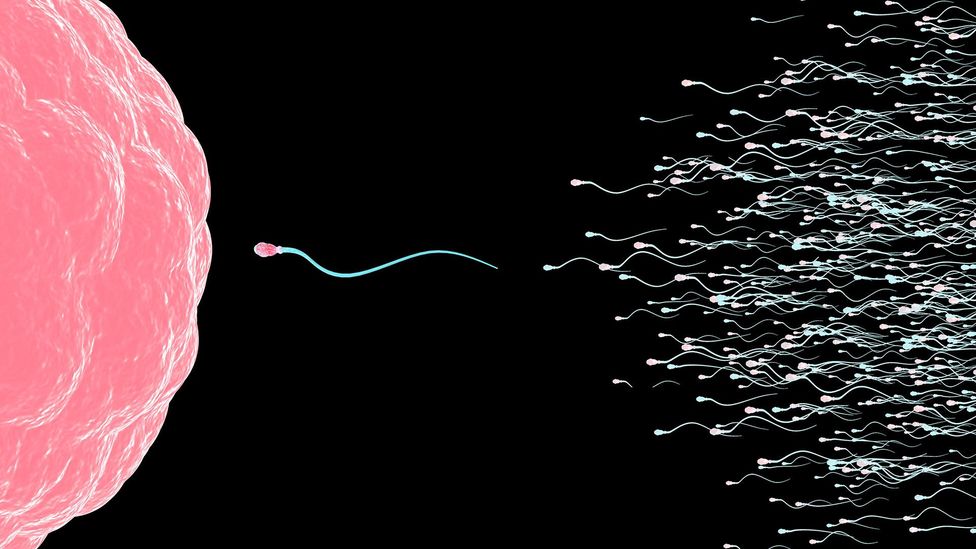
Men tin can begetter hundreds of children: what if scientific discipline could permit women to do the aforementioned? (Credit: SPL)
After all, human males produce millions of sperm daily throughout their lives, pregnant they have essentially no natural limit to how many children they might sire other than bachelor, ovulating partners. The conquistador (and possibly inveterate rapist) Genghis Khan likely fathered hundreds of children across his continent-of-Asia-spanning empire approximately 800 years ago; genetic evidence implies some xvi million people alive today are descended from him.
"Theoretically, men can father children into a very advanced age and if they start having children young, then you can get the Genghis Khan model," says Tilly. Assuming his research fully pans out, when information technology comes to practically answering the question of biological progeny, "male person fertility doesn't really have a limit," Lilly says, "and women'southward doesn't, either."
Clearly, this scenario of mothers with countless children would crusade quite a stir if it comes to pass – perhaps even more than and so than the 69 children of Mrs Vassilyev. Would a homo who fathered scores of children nowadays raise the aforementioned hackles, though, and if not, is that fair?
"People treat unlimited male fertility with a shrug, because everyone knows we can do information technology," says Tilly. "Every bit shortly equally we kickoff talking about the infinite possibility of female fertility, though, people get crazy." He feels a sense of perspective should be kept and that the equality women have equitably sought in contempo decades should utilise to procreation also. Says Tilly on the matter: "In that location actually should be no difference between the sexes."
How Do U Know How Many Babies She Having
Source: https://www.bbc.com/future/article/20151020-did-one-woman-really-give-birth-to-69-children